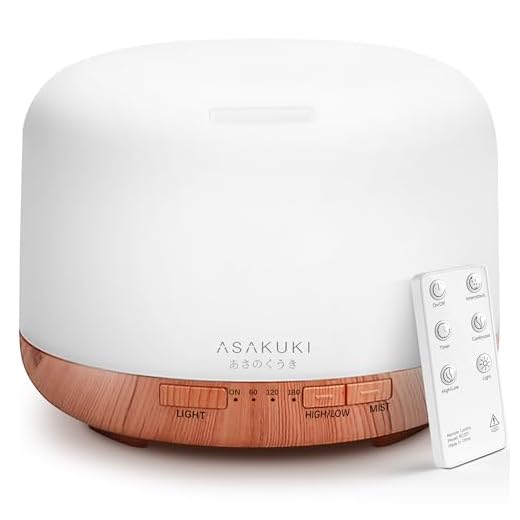Unwind Without Leaving Home
Quick friendly steps to turn your home into a calm stress-busting hideout. No special skills; just small, kind choices for your nervous system and maybe light that unused candle today.
What You'll Need
5 Easy Home Stress Relief Techniques to Calm Your Day
Create a Calm Corner
Design a tiny sanctuary—because your sofa deserves a promotion.Pick one small area as your ‘de-stress zone’—a chair, a corner, or even a window ledge. Clear clutter, add a soft throw, a cushion, and a small surface for tea or a book. Position it where light is pleasant; if natural light is scarce, use a warm lamp.
Make it simple and inviting—think of it as a tiny retreat where you can actually sit without rescuing socks from the floor. Add a few soothing items only:
Keep electronics out or set them to do-not-disturb. The point is predictability: when you walk into this spot, your brain should think, “Ah—time to decompress.”
Control Your Senses
Turn down chaos with smell, sound, and light—your brain will RSVP ‘relax.’Swap harsh overhead lights for a warm lamp or a dimmer. Make the room glow like it’s on your side.
Choose a consistent calming scent—lavender, citrus, or whatever doesn’t make you sneeze—and use a diffuser or put a dab on your wrist.
Create a short playlist of ambient sounds, nature recordings, or gentle instrumentals and save it to your phone so you’re not hunting during a tense moment.
Try white noise or noise-canceling headphones if outside sounds fray your nerves.
Add a tactile anchor—a soft blanket, a weighted lap pad, or a stress ball—to ground yourself when thoughts race.
When your brain starts sprinting, reach for one sensory fix and breathe.
Breathe Like You Mean It
Deep breaths: the free, underrated chill pill.Reset your nervous system—breathing beats doomscrolling. Try a focused breath to pull your body out of autopilot and into calm.
Try these patterns to start:
Box breathing: inhale 4, hold 4, exhale 4, hold 4 — repeat four times.
4‑6‑8 breathing: inhale 4, exhale 6, extend the exhale to 8 to cue calm.
Place one hand on your belly and one on your chest to feel diaphragmatic breathing—your belly should rise more than your chest.
Do a short guided breathing routine for 3–5 minutes; apps help, but a simple timer or stopwatch works fine.
Use this practice anywhere—standing in line, before a tense call, or while you wait for your coffee to not burn you with stress.
Move—but Make It Gentle
Stretch, sway, or dance awkwardly—movement beats anxiety.Move gently: loosen tight spots with a quick 10‑minute sequence. Try neck rolls, shoulder shrugs, cat–cow stretches, then sit or stand and reach for gentle hamstring stretches—hold each for 20–30 seconds.
Put on two songs and dance like no one’s watching—sway, step, spin; you’ll melt stiffness and invite endorphins. If you’re at your desk, stand and march in place for the length of a song to reset thought loops.
Take a short walk around the block to change perspective. Try slow, deliberate yoga poses or tai chi‑like movements for proprioceptive calm. Finish with a few grounding squats or heel raises to feel your feet on the floor and your mind in the present.
Switch Off Worry (Short-Term Habits)
Small rituals with surprisingly strong anti-stress magic.Interrupt worry loops with tiny, repeatable rituals. Pick one or two and do them reliably—small beats spectacular.
These habits signal that problems are manageable and scheduled, not urgent.
Create a Recovery Routine
Build a nightly reset so stress trips don’t become full vacations.Make regular de-stress rituals part of your week so relief actually sticks.
Design a nightly wind-down: dim lights, put devices away an hour before bed (try a bedtime contract with your phone), read or stretch, and note three small wins of the day.
Schedule a weekly self-care block—take a warm bath, do a hobby session, or have a video call with a friend—and treat it like any other appointment.
Track what works in a simple log (phone note, notebook, or habit app) and repeat favorites.
Plan a check-in with a therapist or coach if stress feels persistent or overwhelming.
Turn ad‑hoc relief into reliable recovery.
You Got This—Relax
Try one tiny step today—make a calm corner or take a deep breath—and watch calm compound. Share your wins (or funny fails). Try it and tell someone how it went!












This actually made me tear up a little — in a good way. The ‘Unwind Without Leaving Home’ intro felt like it was written to me. Quiet reminder that relaxation doesn’t require a getaway.
Tried the breathing exercises for five minutes before bed and noticed my heart rate slowed. I’m bookmarking this to repeat weekly.
Nice — little tech boundaries can be powerful. Good call!
You should try pairing the breathing with a warm cup of chamomile. Makes the whole ritual feel like a mini-retreat.
@Tom Thanks, will try chamomile tonight. Also switched my phone to Do Not Disturb for the 10 minutes before bed and it’s helped a lot.
That means a lot — thanks for sharing, Grace. Bookmarking is exactly the kind of gentle commitment we hope for.
Good list overall. But ‘Breathe Like You Mean It’ felt a bit hand-wavy — could use a couple of concrete breathing patterns for beginners. Like 4-4-4? 4-7-8? Not everyone knows the names.
Fair point, Marcus. I’ll add explicit steps for 4-4-4 and 4-7-8 breathing in that section — plus timing tips (use a timer or count in your head). Thanks for the nudge.
4-7-8 helped me panic less during exams. Count silently, don’t force the breath — worked better when I practiced lying down first.
Helpful guide, but two practical notes:
1) “Control Your Senses” — what if you live in a noisy apartment? Noise-cancelling headphones can be expensive. Any budget alternatives?
2) The “Recovery Routine” sounded a little rigid — some days I need flexibility, not another checklist.
Constructive: add cheap/no-cost noise tips and emphasize that routines should be flexible adaptations, not rules.
Also worth mentioning: apps like ‘myNoise’ let you customize soundscapes for free or low cost.
I second the fan trick. Works and doubles as ambient sound for sleep. Also, routines can be 5-minute anchors — not full schedules.
I use a simple white-noise YouTube loop on my phone and it drowns out neighbors. Headphones + app = cheaper than $200 noise cancelers.
@admin Thanks — appreciate the update. Will try fan + white-noise app tonight.
Great feedback, Ben. I’ll add budget-friendly noise options (earplugs, white-noise playlists, fan noise) and a note on flexible routines — routines as guides, not shackles.
Okay, I admit I was skeptical about the “Move—but Make It Gentle” part. I’m not a yoga person and honestly can’t touch my toes.
But I tried the suggested 10-minute stretch routine this morning: cat-cow, gentle twist, and a slow walk around the block. Felt less stiff and my mood lifted a little. Small wins!
Also, the “Switch Off Worry” tips were practical — the single-tasking idea helped me stop doom-scrolling. Will try to keep doing it.
If touching toes isn’t your thing, try hip openers and hamstring stretches while seated — easier and still effective.
@Priya Thanks, I’ll try seated versions. Also hi everyone, I may post updates if this becomes a habit lol.
Big mood. When I started walking 10 minutes every day, it became a ritual that actually protected my mental space. Not a fitness flex, just preservation.
So happy you found something that fits, Aisha! Tiny, consistent movement often beats intense but sporadic workouts. Keep celebrating the small wins.
Tried the “Create a Calm Corner” tip last night and wow — actually slept through the night for once. Kept it simple: fairy lights, a blanket, and no screens. Highly recommend.
One thing I added: a small notebook so I can jot down nagging thoughts before bed. Helps me switch off faster. 😊
So glad it worked for you, Emma! The notebook trick is a great addition — writing things down is surprisingly effective for clearing the mind before sleep.
Nice! Been trying something similar but with a Himalayan salt lamp. Lights are low-key therapeutic tbh.
Fairy lights = game changer. Also, try a small lavender sachet if you want a bonus calming scent.
I needed a guide like this. The step-by-step makes it approachable.
Longer thoughts:
– The “Switch Off Worry” section: schedule a 15-minute ‘worry time’ in the afternoon. It sounds silly but it contained my anxious loop so I could focus the rest of the day.
– The “Create a Recovery Routine” part helped me recover from social burnout — I now have a 20-min reset after work: shower, change, herbal tea, 10-min quiet.
This guide is practical, not preachy. Thank you.
PS: minor typo in the breathing section (extra ‘the’ in second paragraph).
Omg the 20-min reset is my secret weapon. Even a quick shower can feel therapeutic if you make it intentional.
@Maya Exactly. It’s the small rituals that compound. Also thanks, admin — typo fixes appreciated.
Thanks for the detailed note, Sophie — love the ‘worry time’ idea and the recovery routine sounds perfectly doable. We’ll fix that typo ASAP.
Short and sweet: loved the “You Got This—Relax” vibe. No guilt attached, which is rare in self-care guides.
Totally. That line felt like permission. Took it and made tea. 🙂
So glad that came across — we wanted to avoid the guilt spiral. Relaxation should feel achievable, not like another task.
I enjoyed this, though I’m suspicious of the phrase ‘Create a Calm Corner’ — like, is it a corner or a whole mood now? 😂
Kidding aside, I did the scent thing (citrus for morning, lavender at night) and it’s funny how much it cues my brain. Smells are underrated mind-hackers.
Haha, it’s fine if the whole room turns into a calm corner — as long as it helps! Love the idea of using different scents for different times of day.
Agree on smells. Citrus wakes me up better than coffee sometimes. Also, buy a cheap diffuser and you can swap oils easily.
@Sophie Will try a diffuser. If it makes me less grumpy in the AM, it’s worth the $.